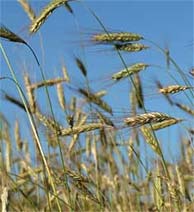Mercantile rye

The rye grain is hard, of elongated form), with a clearly expressed little furrow, of pale greenish color, yellowish, and pink, color depending on a sort and growing conditions. Average chemical composition is the following: water-14%, carbohydrates-70% (grits-around 62%) raw proteins-11, 5%, fats-1, 8%, cellulose 3,5% and mineral components-1, 8%. Calorific value of flower is average (335 Kcal for 100g), but it is rich with iron, phosphor, sulphur and vitamin B.
The Usage: Rye has been used for production of flower, bread, rolls, biscuits, whisky, vodka …
Storing conditions: Moisture and temperature must be controlled at all times, in order to establish them handling of ryes needed, which are basically narrowed down to drying and ventilation. Good circulation of the air as well as that the air is dryer than the rye grain has to be ensured. For providing optimal conditions, it is necessary to know temperature and moisture of grain of rye, as well as temperature and relative moistness of air in the storage. Temperature should be up to 8 C, and moistness to 12%.
Transportation requirements: Regardless whether rye is transported in bulk or beg packed or in the other packs the basic conditions, which must be met by all means of transportation are the following: That they are in good order, without external smells and strong smells in general, that they are without grain remains and the other remains of the previous


